I discovered Pasatiempo many years ago while playing golf on the Nintendo Wii, of all places.
As soon as I worked out it was an actual golf course I was keen to play the real thing and when I discovered the special place it occupies in the career and life of Alister MacKenzie it became a life goal to visit.
So bright and early on the last day of my recent visit to the US I arrived at least two hours ahead of my 10am tee time and walked the back nine in solitude before meeting my playing partners.
Those who know me are aware that moments of speechlessness are few and far between, but almost the entire way around, walking through the dew with only a couple of grounds crew around, I was genuinely in shock. I sat on the bench by the ladies' 11th tee for 10 or 15 minutes just watching the hole, in disbelief.
A similar situation followed standing in the 16th fairway, watching the flashed face dwarf the greenkeeper raking the front bunker, accentuating the indescribable scale of that entire green complex.
I had been imagining those holes via photos and stories for years, building the place up in my mind, and yet somehow I had not even come close in my wildest dreams to the reality of how special it felt and how unique the holes were. I couldn't wait to actually play them.
It was explained to me later that the native grasses you willl see in the below pictures are a new addition to the course. I am unable to compare first-hand to the course with wall-to-wall green grass, just as I am unable to compare pre- and post-renovation, but referring to pictures I am extremely impressed by what is on the ground right now in both respects.
It is obvious from viewing
these pre- and post-renovation pictures that Jim Urbina, Tom Doak and the rest of those involved at Renaissance Golf Design did a spectacular job recapturing the grandeur of the course and the boldness of the bunkering. They seem to have a knack for recreating the spirit of MacKenzie, both here and at The Valley Club. You must really need a stack of confidence and self-belief to build bunkers like that.
Now, comparing what I saw to prior pictures (like the "after" shots in the above link or even
these pictures by Jim Johnson from May), it appears that the native grass areas achieve three great things: 1. they frame the holes beautifully, 2. they add to the aesthetic and atmosphere of the bold land and architecture, and 3. they greatly reduce the club's need for water.
I really hope the below pictures will do justice to a remarkable golf course that every one of you should make it a priority to play.
The lengthy par four 2nd, begging for a brave drive down the right to open up the best angle to a green that hides the extent of its slopes extremely well, sliding off the hill from back right to front left.
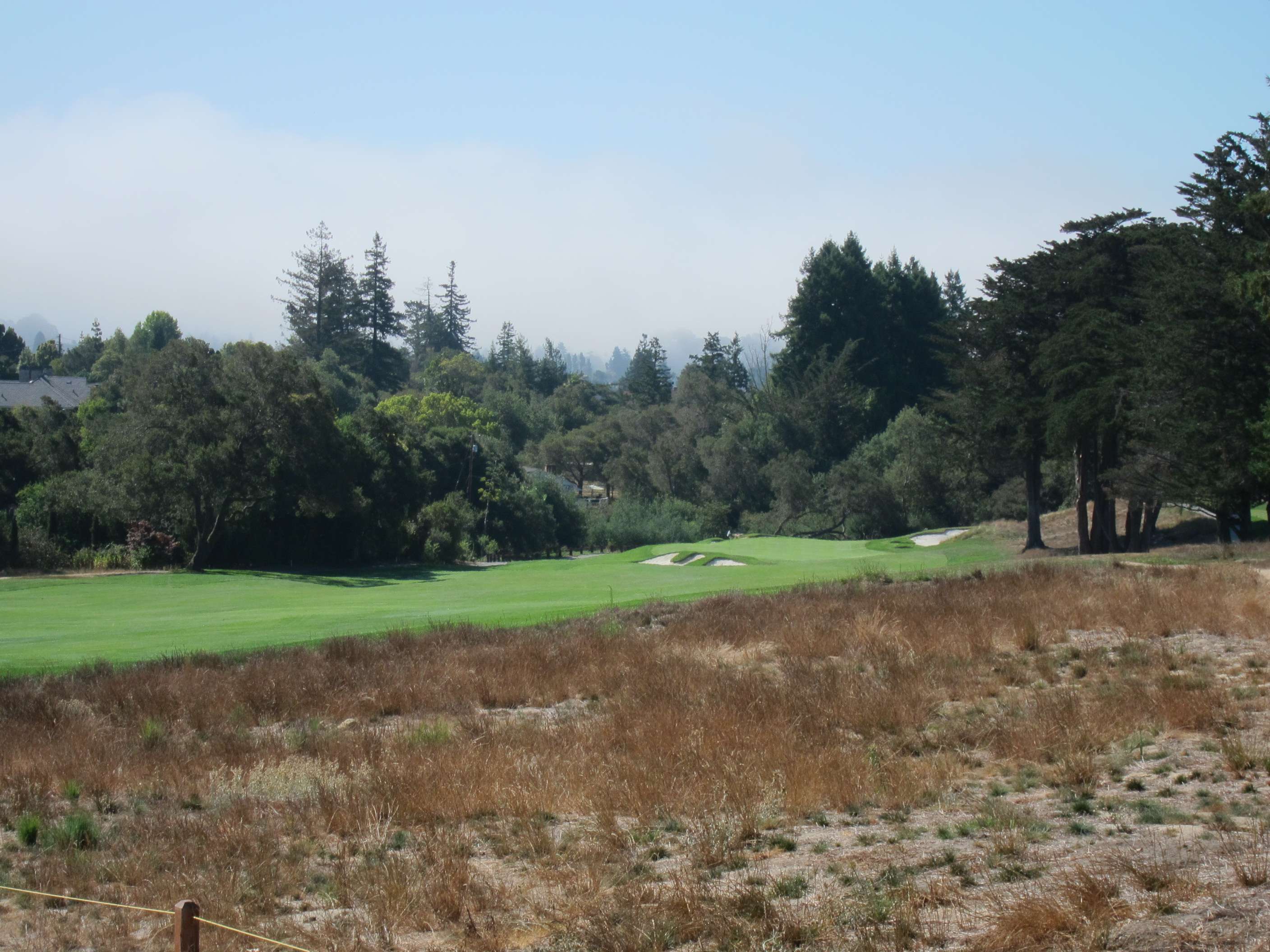
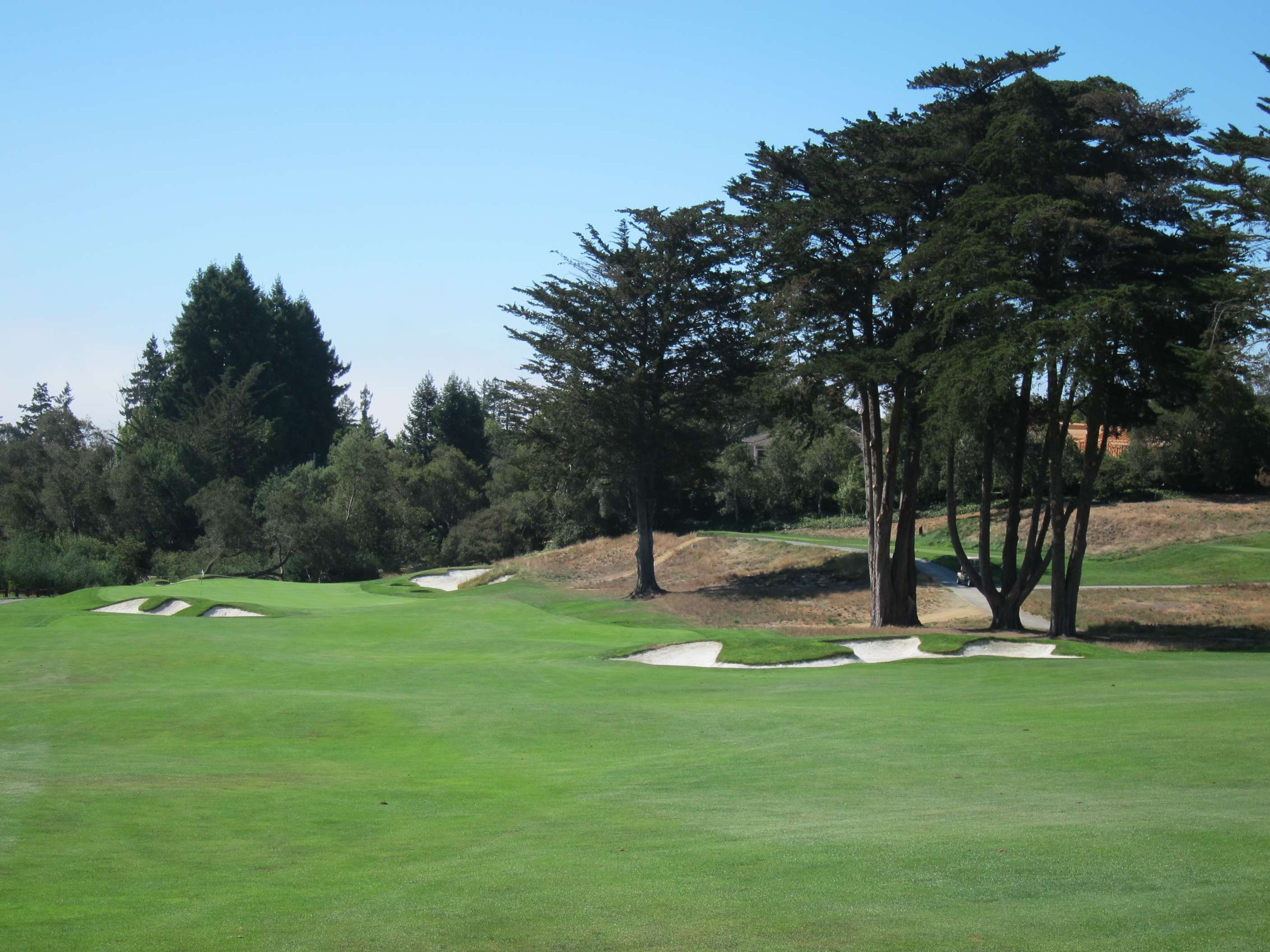
The long (~230-yard) par three 3rd. David Kelly says it's the hardest par three without water or OOB that he has ever played. I am inclined to agree. For the first of many times during the round, I was reminded of Royal Melbourne (West) when I looked at this hole.
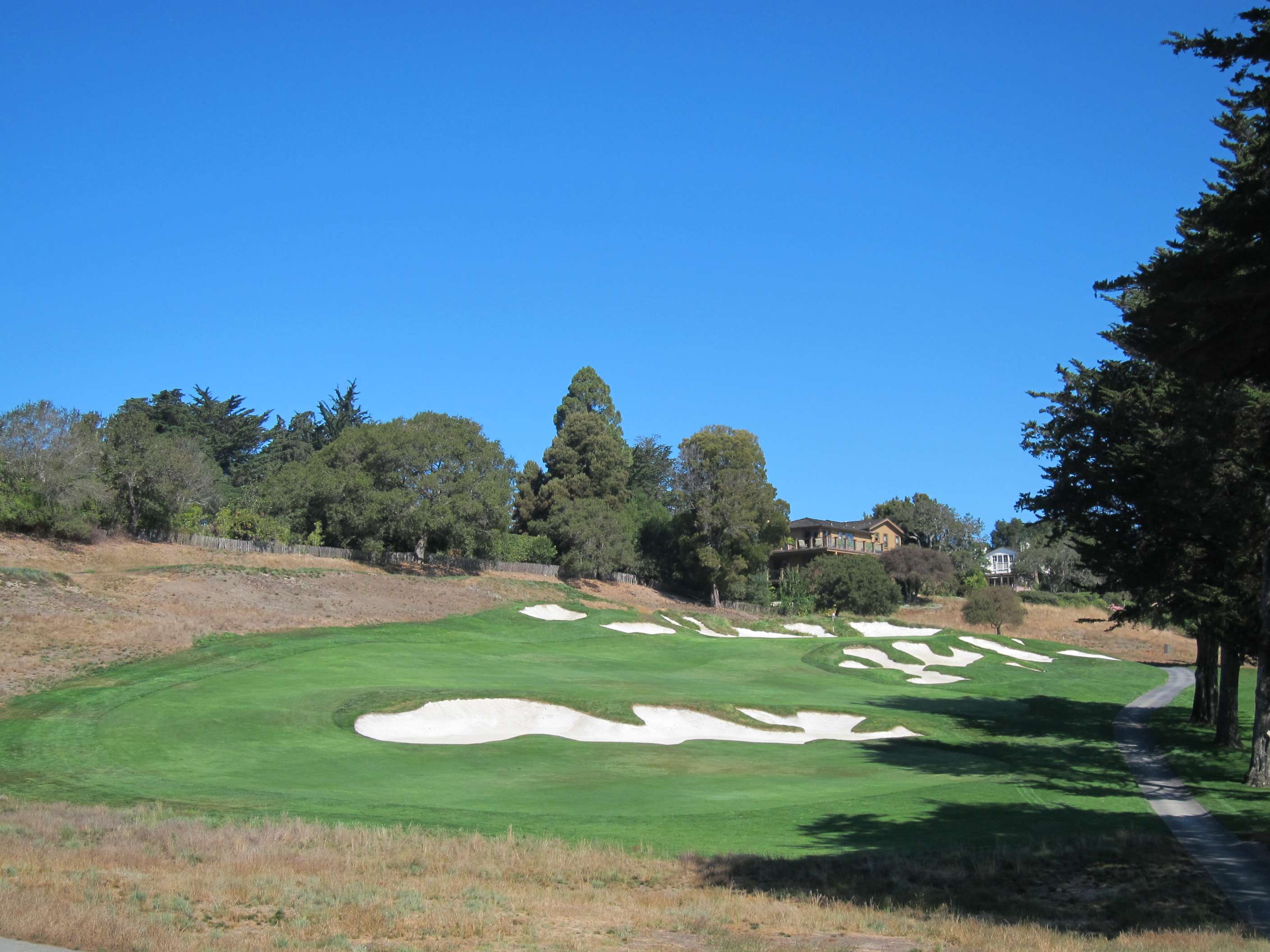
The par four 4th is such a clever hole, the fairway increasingly sloping left the further to that side you err. In combination with that, the bunkers short and left of the green play a huge part of making this hole a highlight of an extremely strong starting stretch.

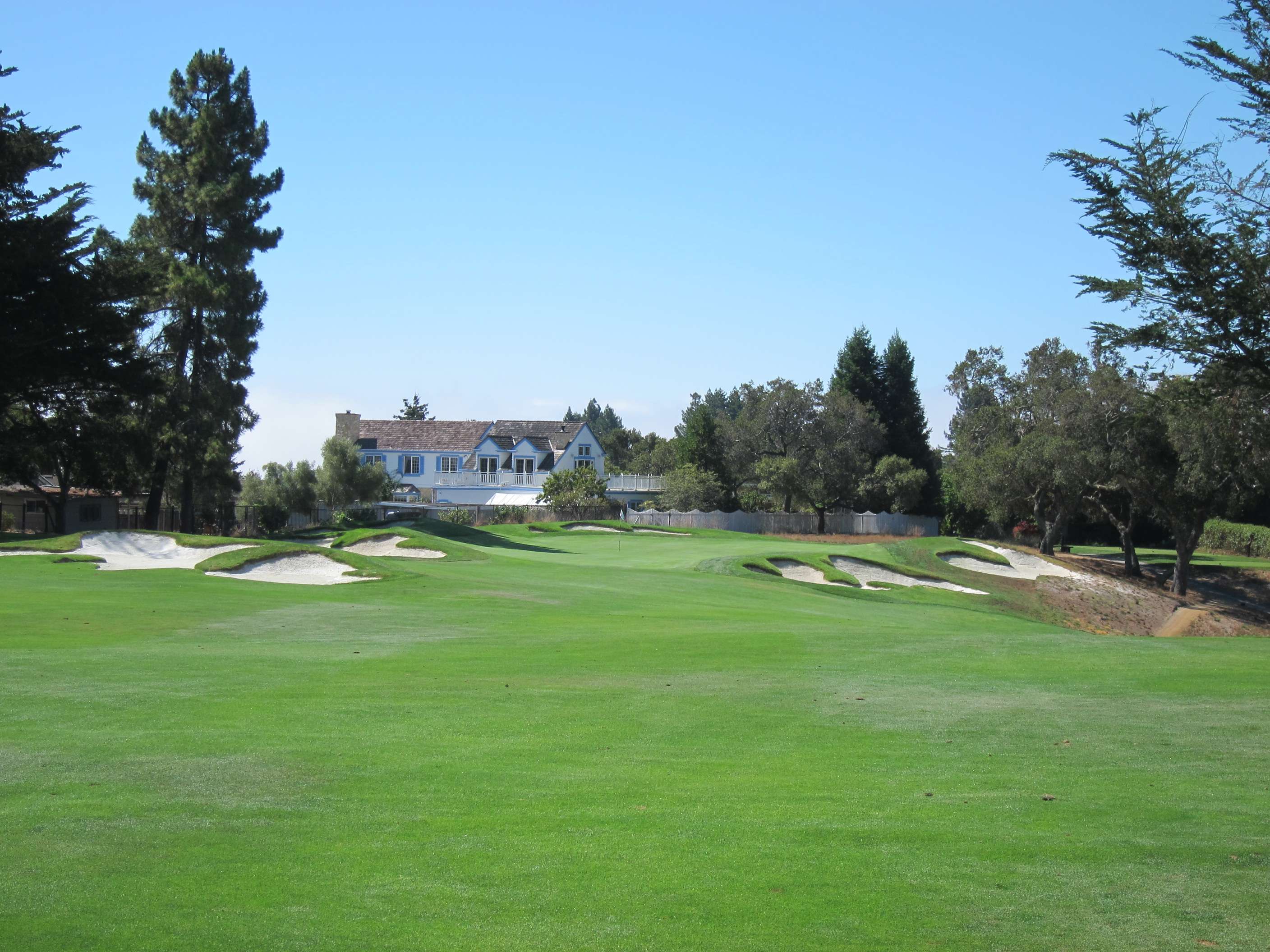
Another great long par three with a wild green (the 5th). I can see how Pasatiempo with the greens running too fast would be exasperating and I understand that has not been uncommon in recent years. I am pleased that I didn't encounter such conditions and was told the club has made a conscious effort to slow them down of late.
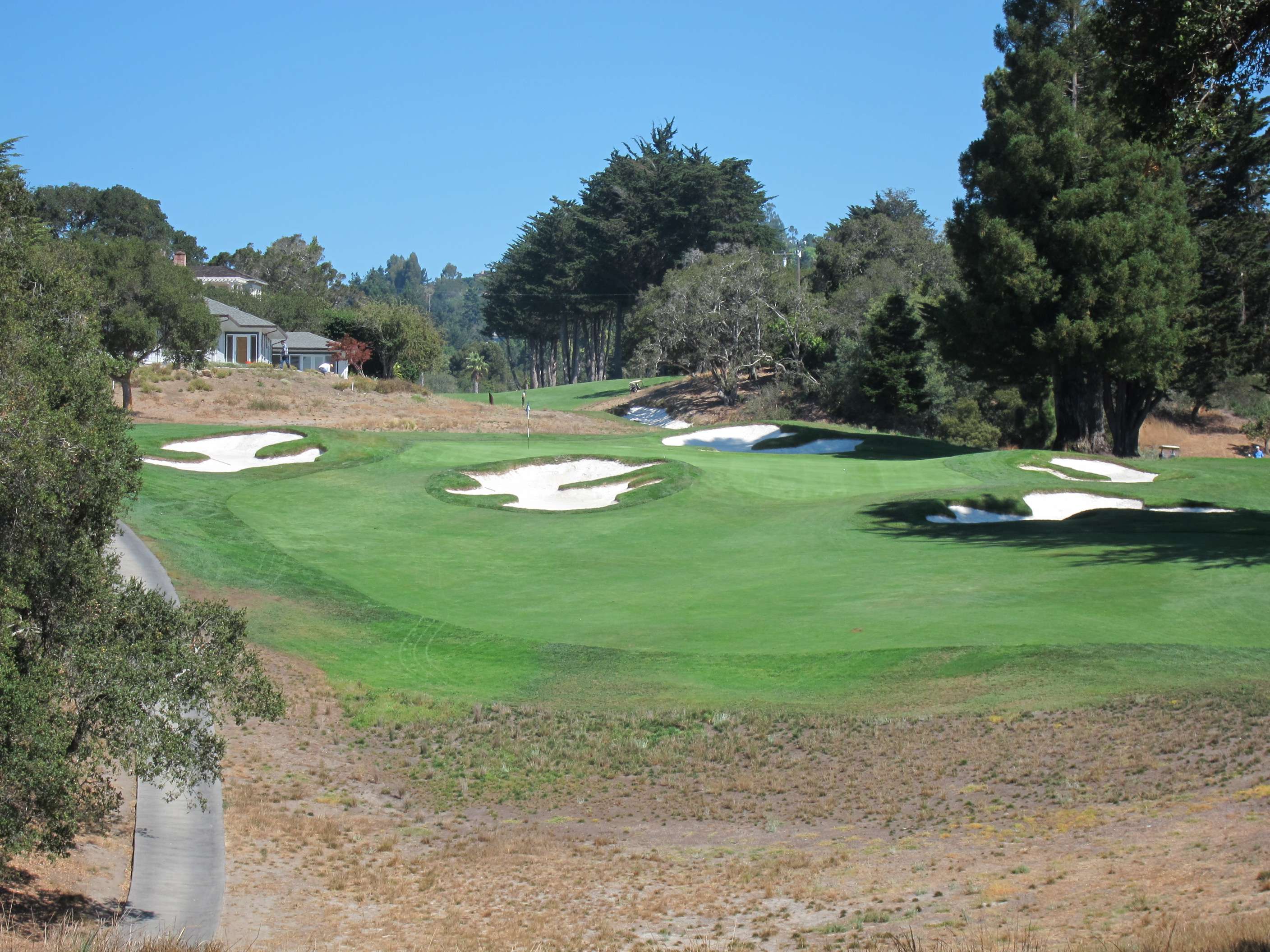
The 7th green viewed from short left. This particularly screamed "Royal Melbourne" to me. I have not come across another architect whose greens and surrounds are so artistic as MacKenzie's. A shame trees (for safety) must compromise this hole so greatly, because it could be a fantastic short four without them.
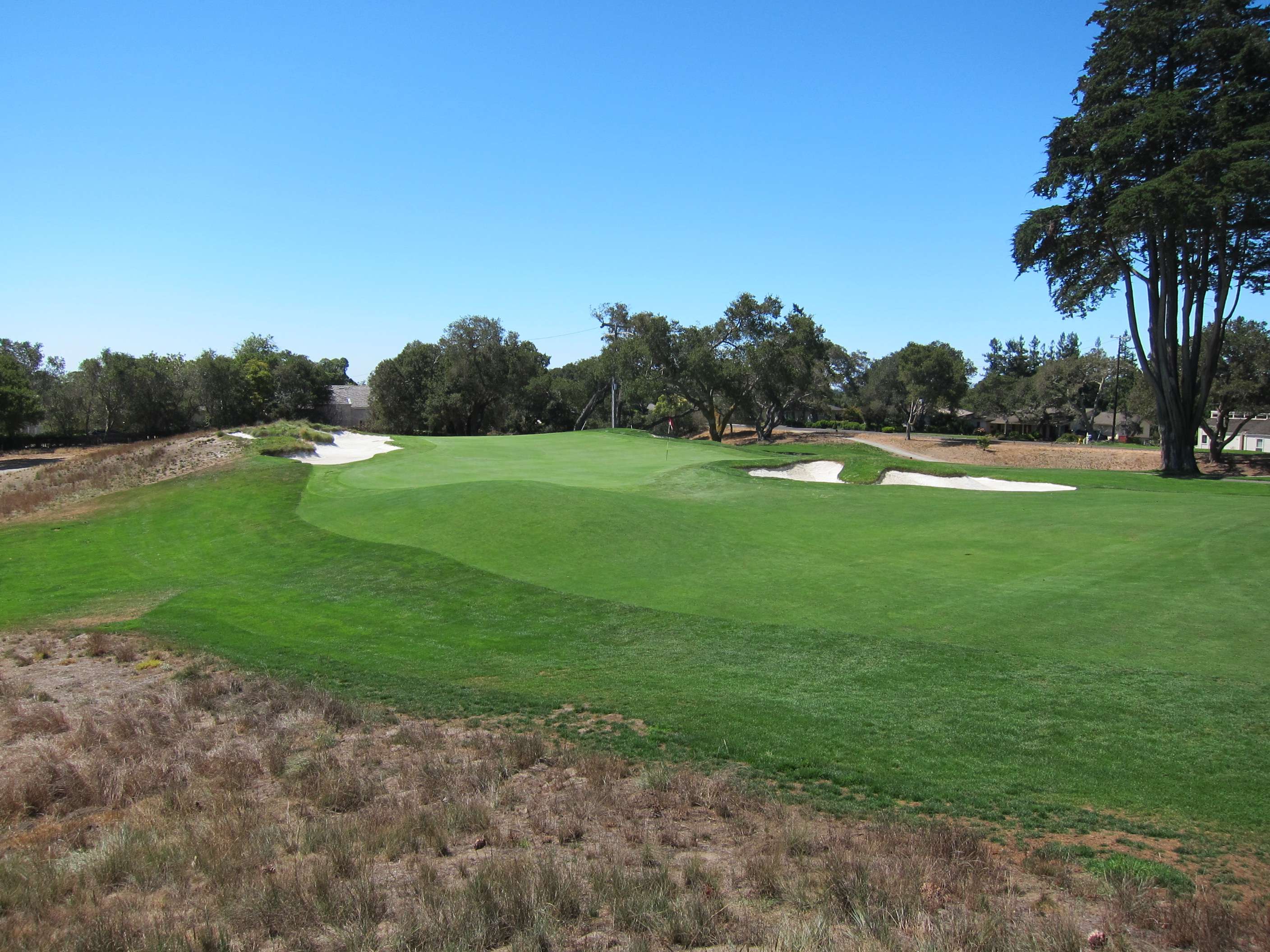
A real feature of the front nine is the majestic internal vistas (as opposed to those out over Monterey Bay - also wonderful) you get standing on the 5th and 8th tees. This is a hell of a fun green for putting and recovery shots, though one that I can see being infuriating at too high a speed.
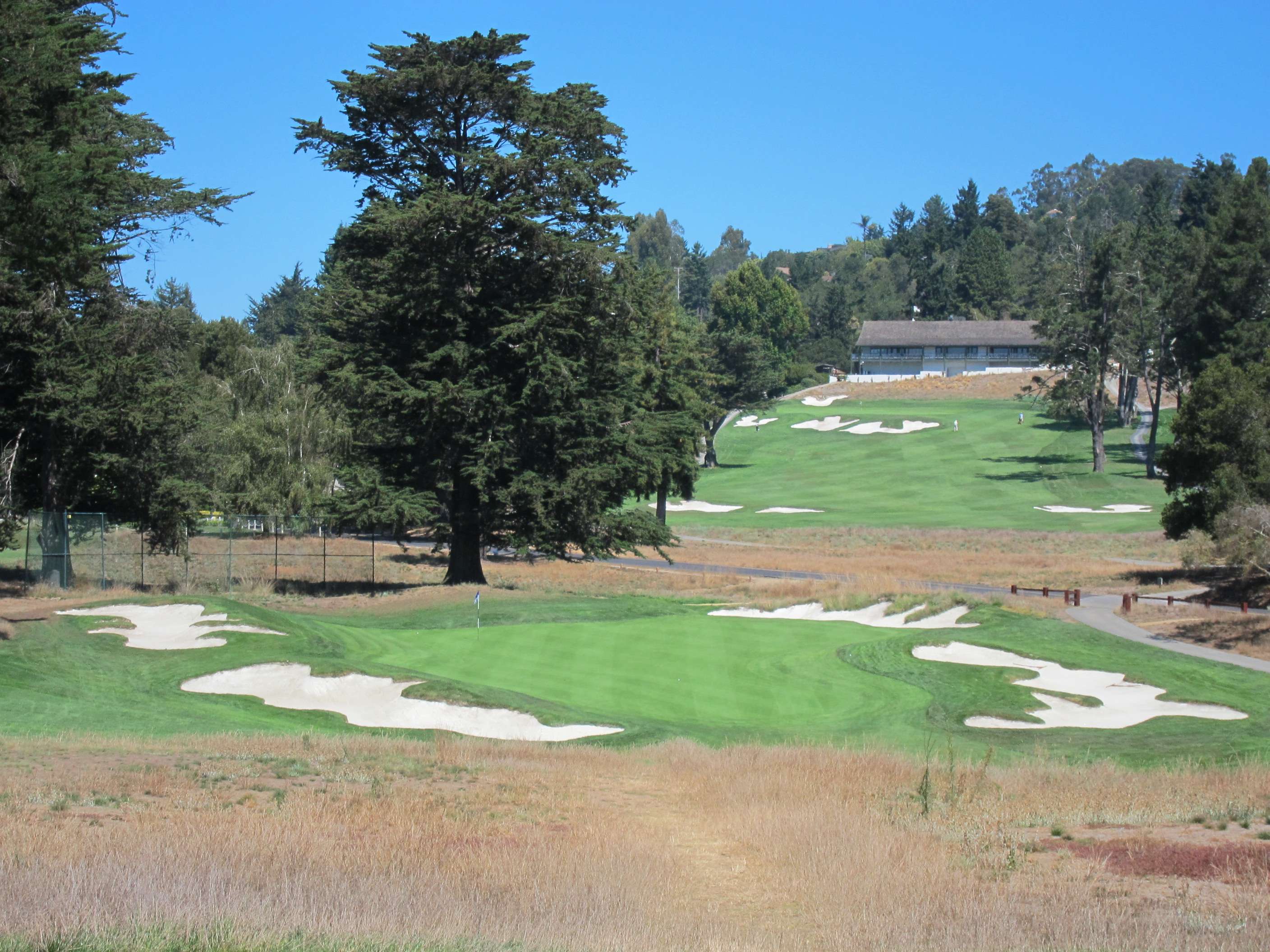
One of the things I love about Northern California is the light. It's hard to explain, but Northern California and Northern Scotland both have a tremendously rich, golden light that I haven't experienced elsewhere and, far more than other locales, watching a golf course change its appearance as the day unfolds in Norcal or the Scottish highlands is something really special. I hope my morning and afternoon pics of 11, 16 and 18 might illustrate that somewhat.
The 11th is in rare air among the best long par fours I have played -- the perfect amount uphill, the barranca at a perfect angle and distance from the tee, the steep green worthy of all that comes before it. A hole that really does defy description and must been seen in the flesh.
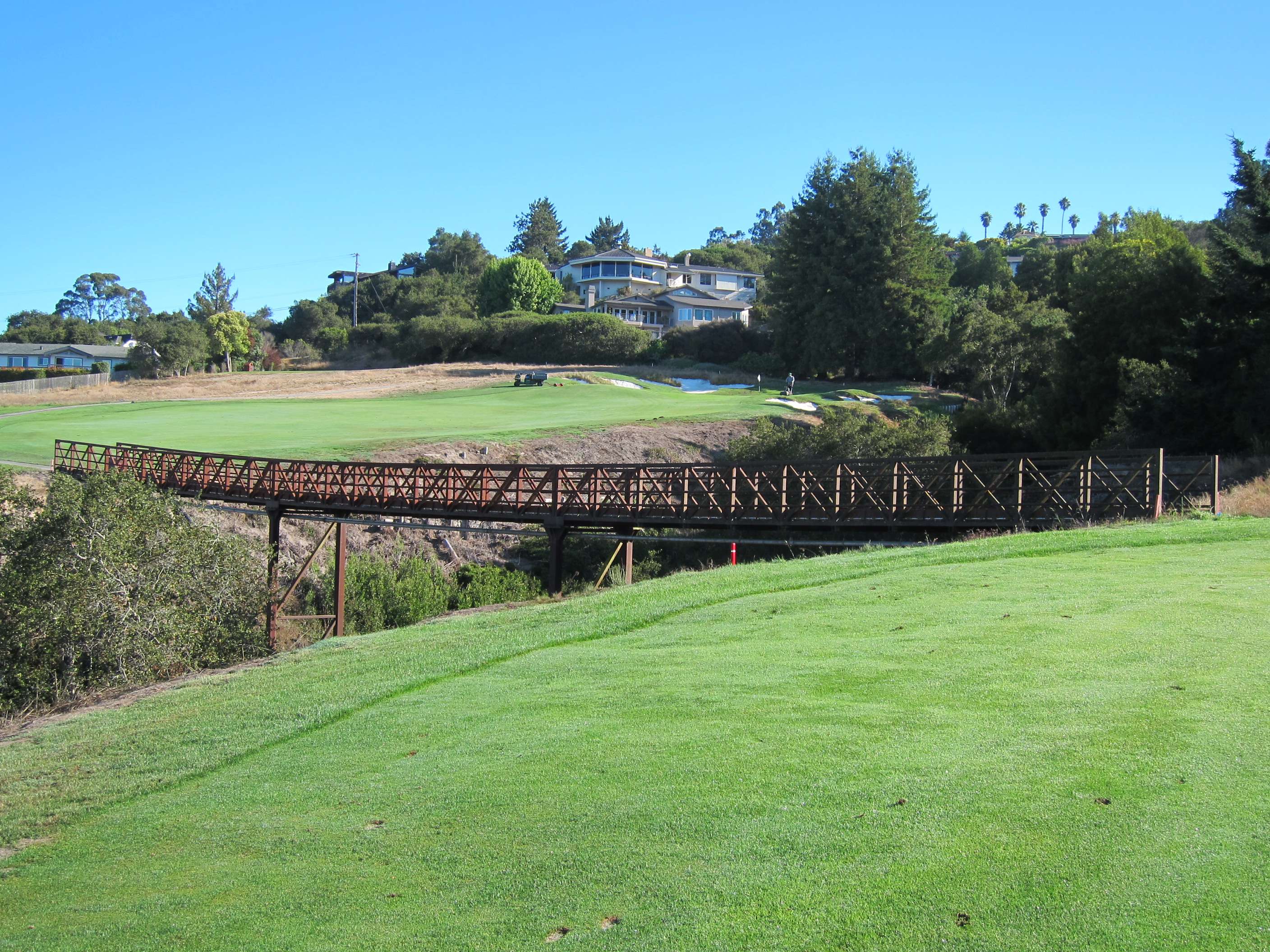

I liked the simple strategy of the 12th -- an example of the milder holes on the course not trying too hard to compete with the showstoppers and adding something to the course in an understated way. Easy after the long 10th and 11th to want to bomb your drive close to the green, but with such a delicate approach from down there, perhaps some restraint and playing to the right about 140 yards out is wiser.
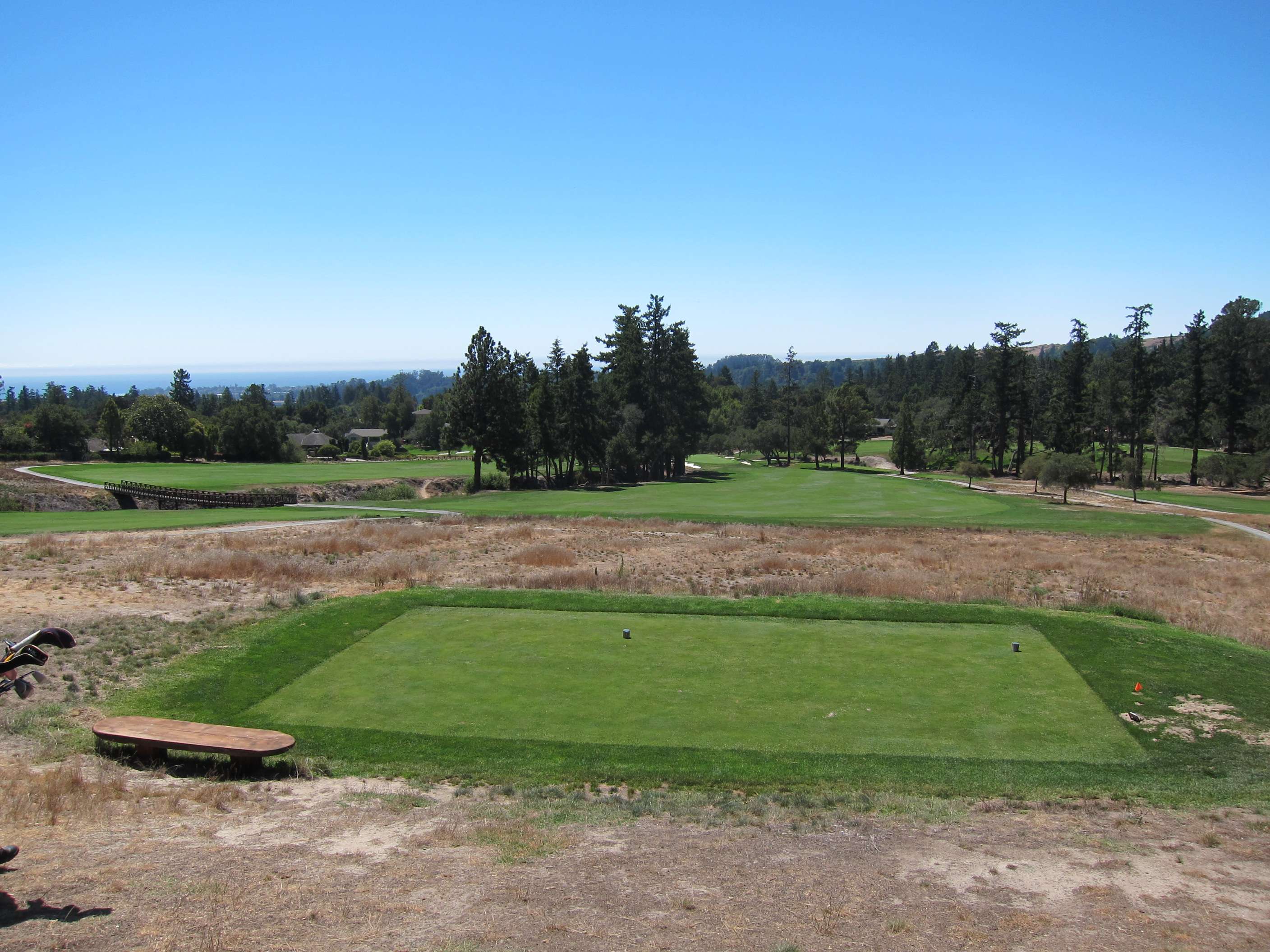
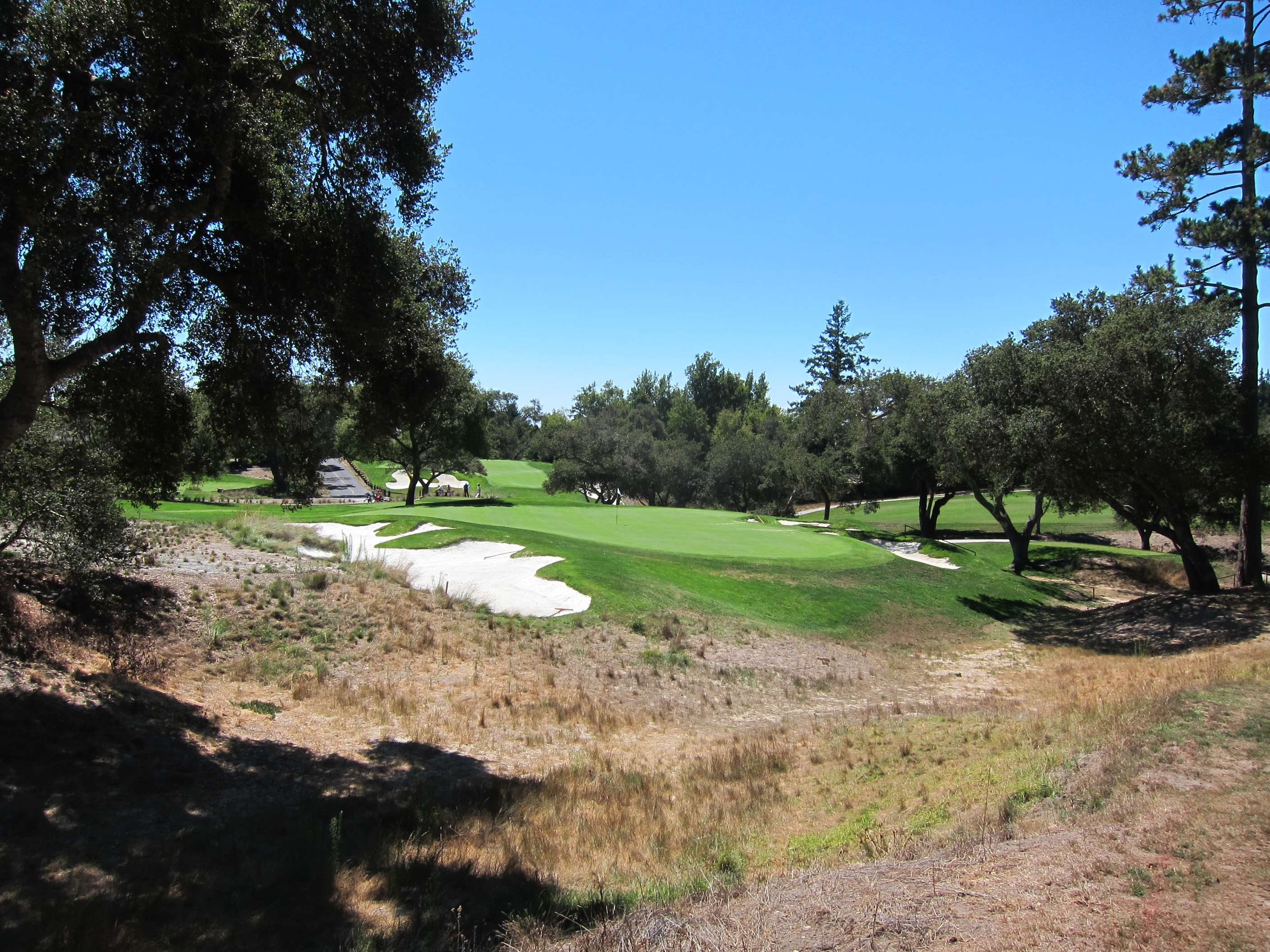
The 13th is another hole that sits on flatter land, but is fun for its smart bunkering. And with the drama that bookends this stretch, it's quite pleasant respite at 12 and 13.
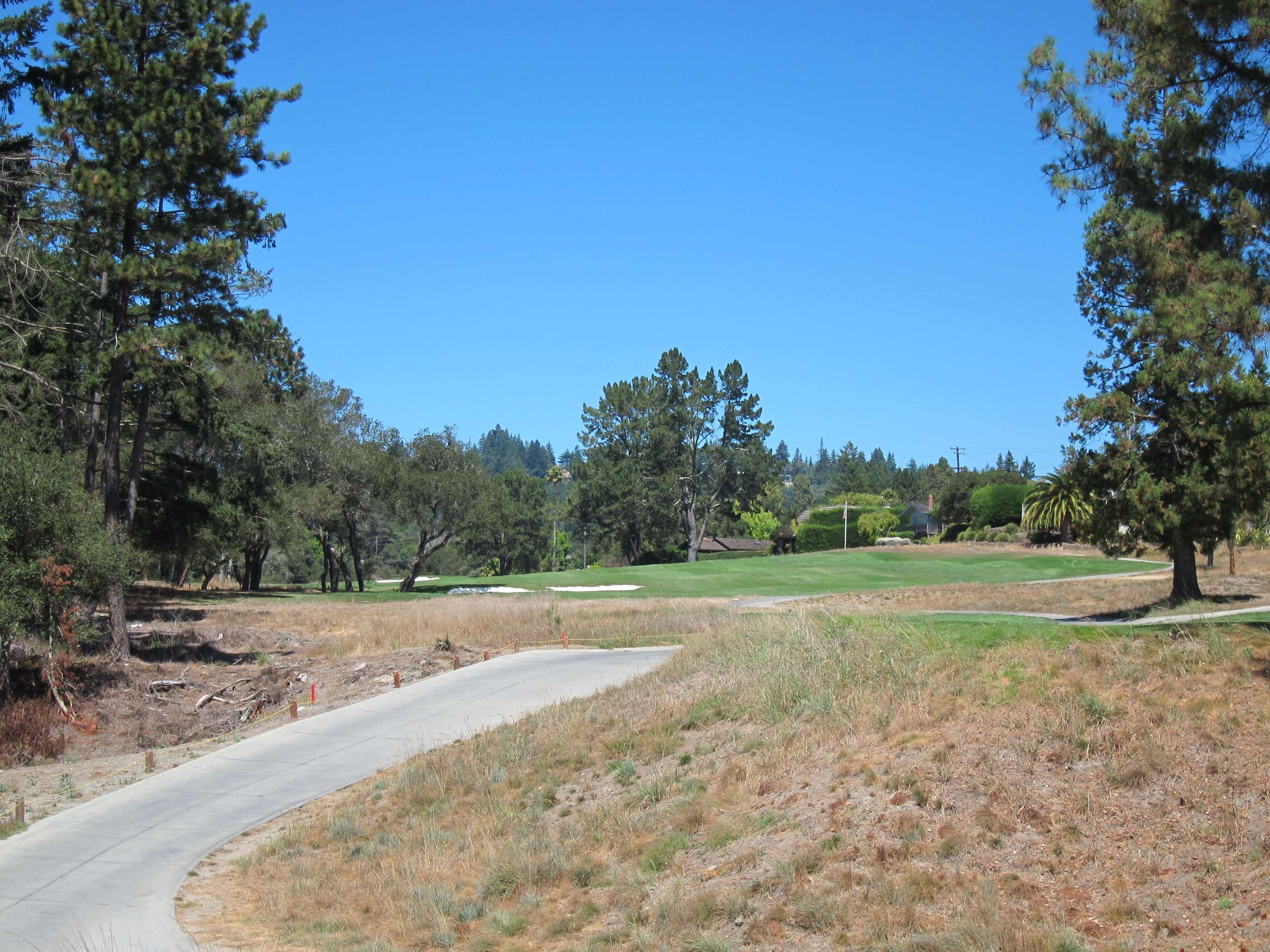

The 14th is a perfect hole for such an unconventional golf course and unique piece of land. The barranca extends into the fairway at driving distance, providing a short grass hazard of sorts that makes for a one-of-a-kind approach shot if you fail to keep your ball on high ground, with the green oriented towards that side of the fairway.
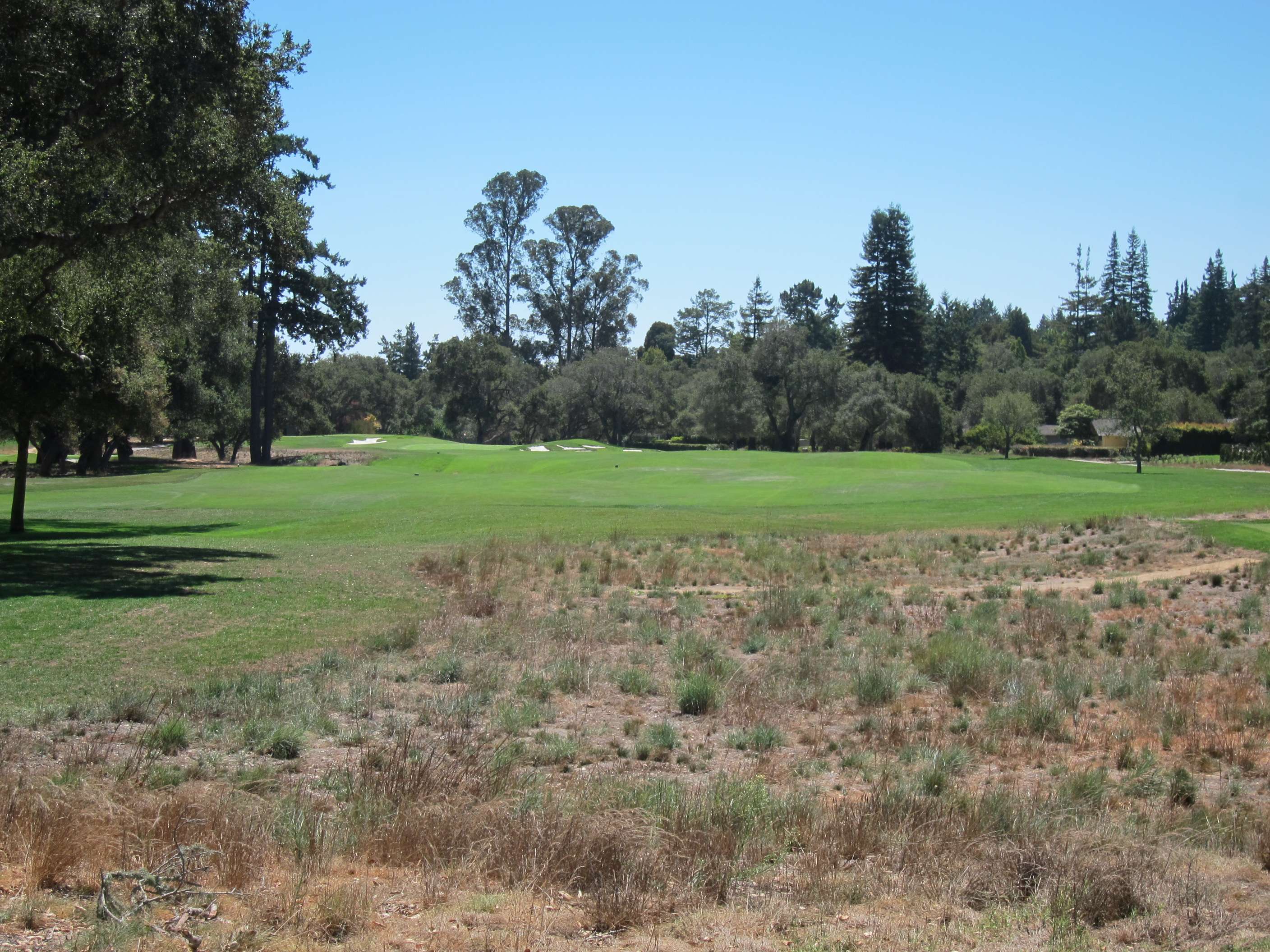
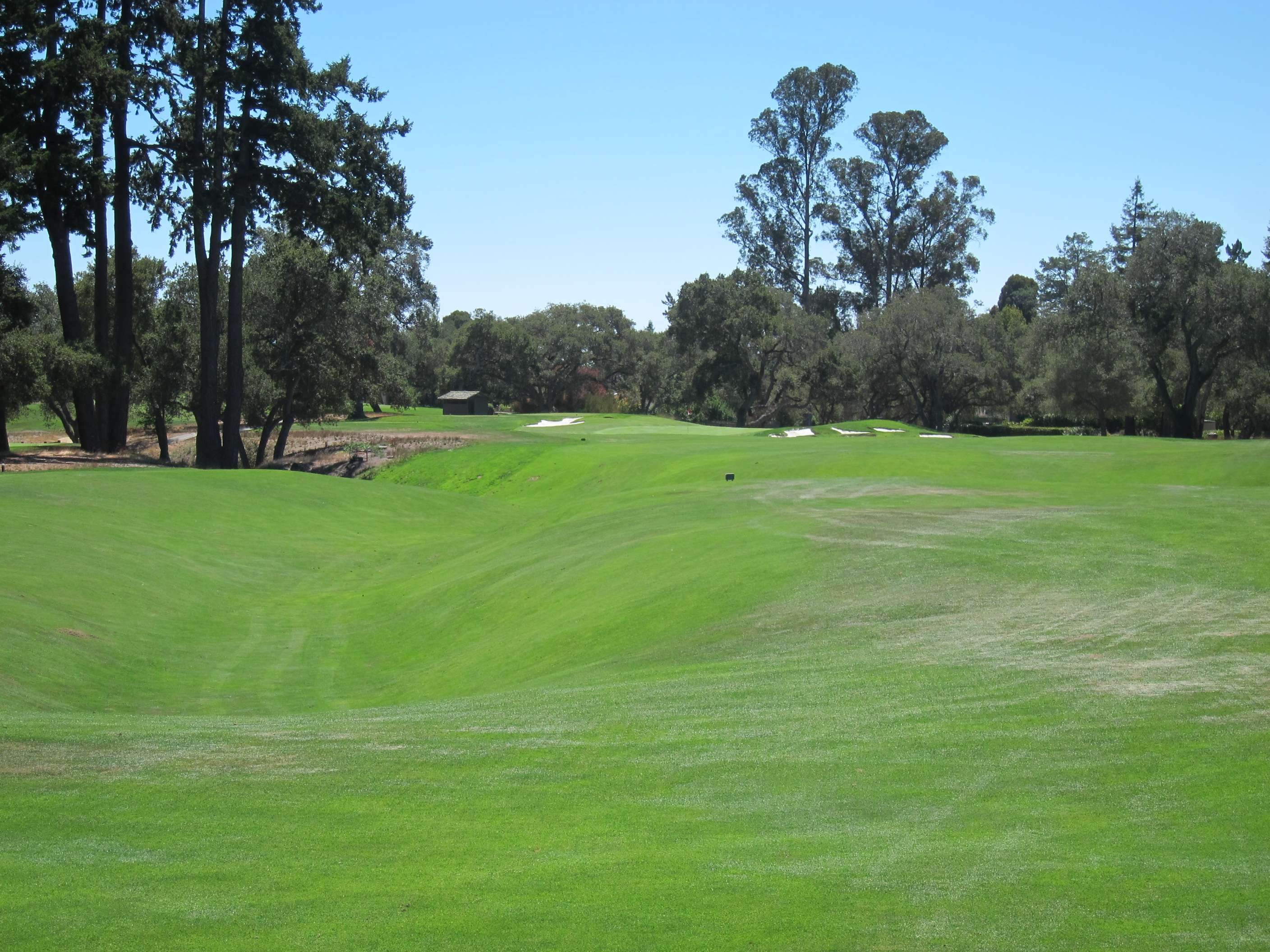
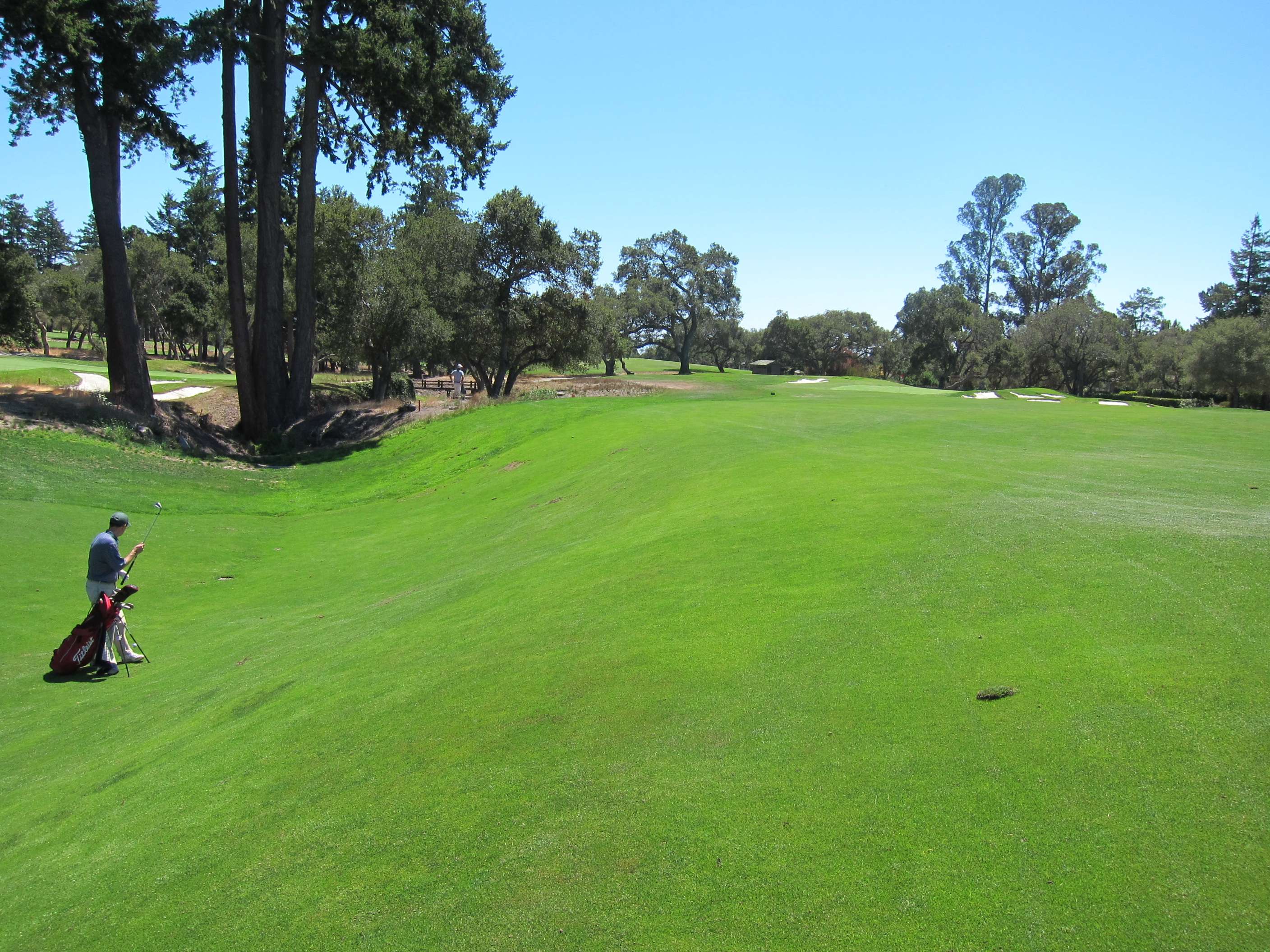
The 15th continues the quality of the par threes, this one much shorter than the first three, but with plenty of trouble if you don't find the angled green.
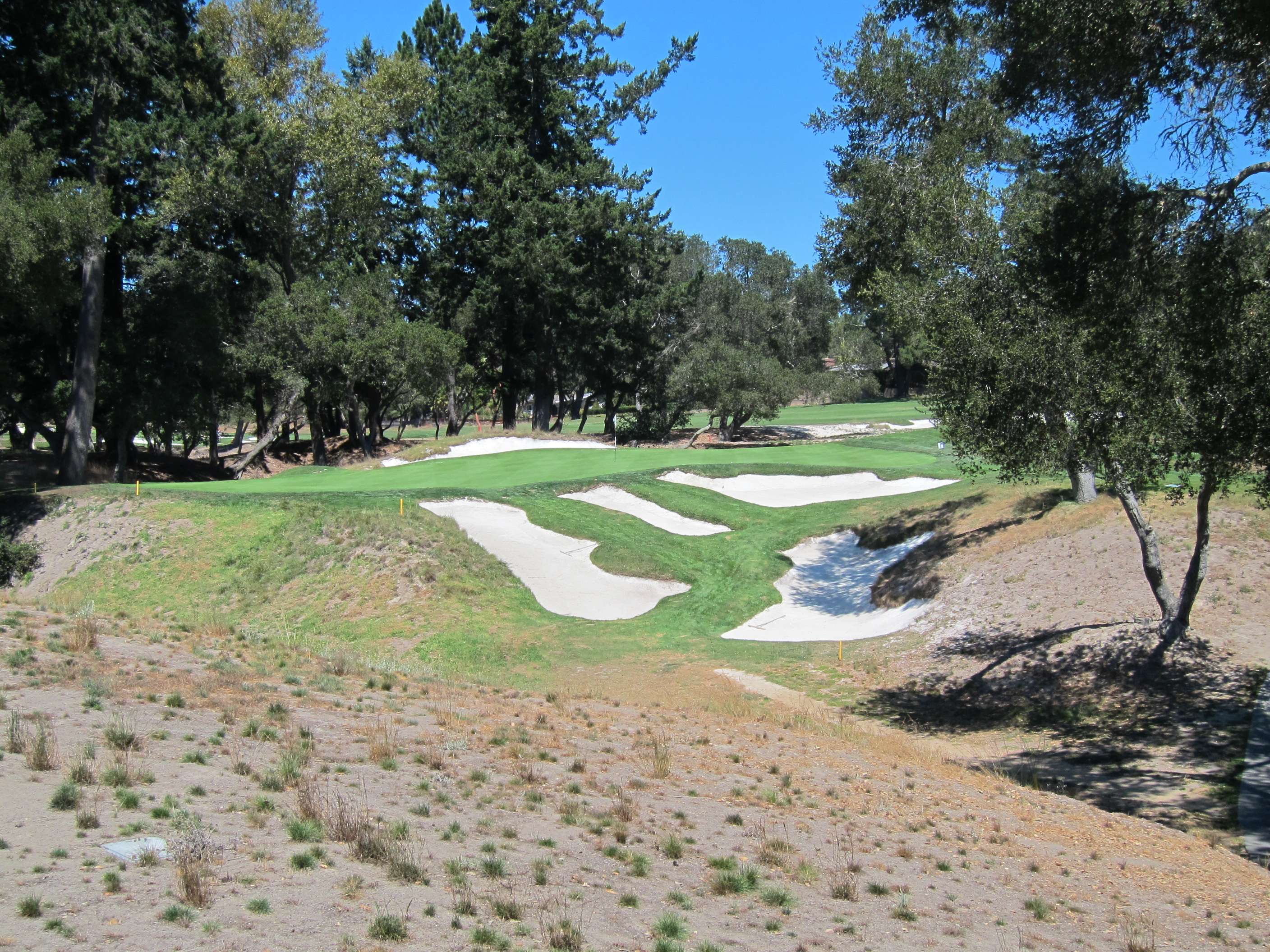
The 16th green and its approach rightfully steal most discussion when it comes to this hole, but it's also a fantastic driving hole. Line is crucial to the angled hogsback fairway. This shows the bold shape of the fairway (with the green just visible near the trees), followed by THAT green. The scale really is something else and a photo cannot do it justice.
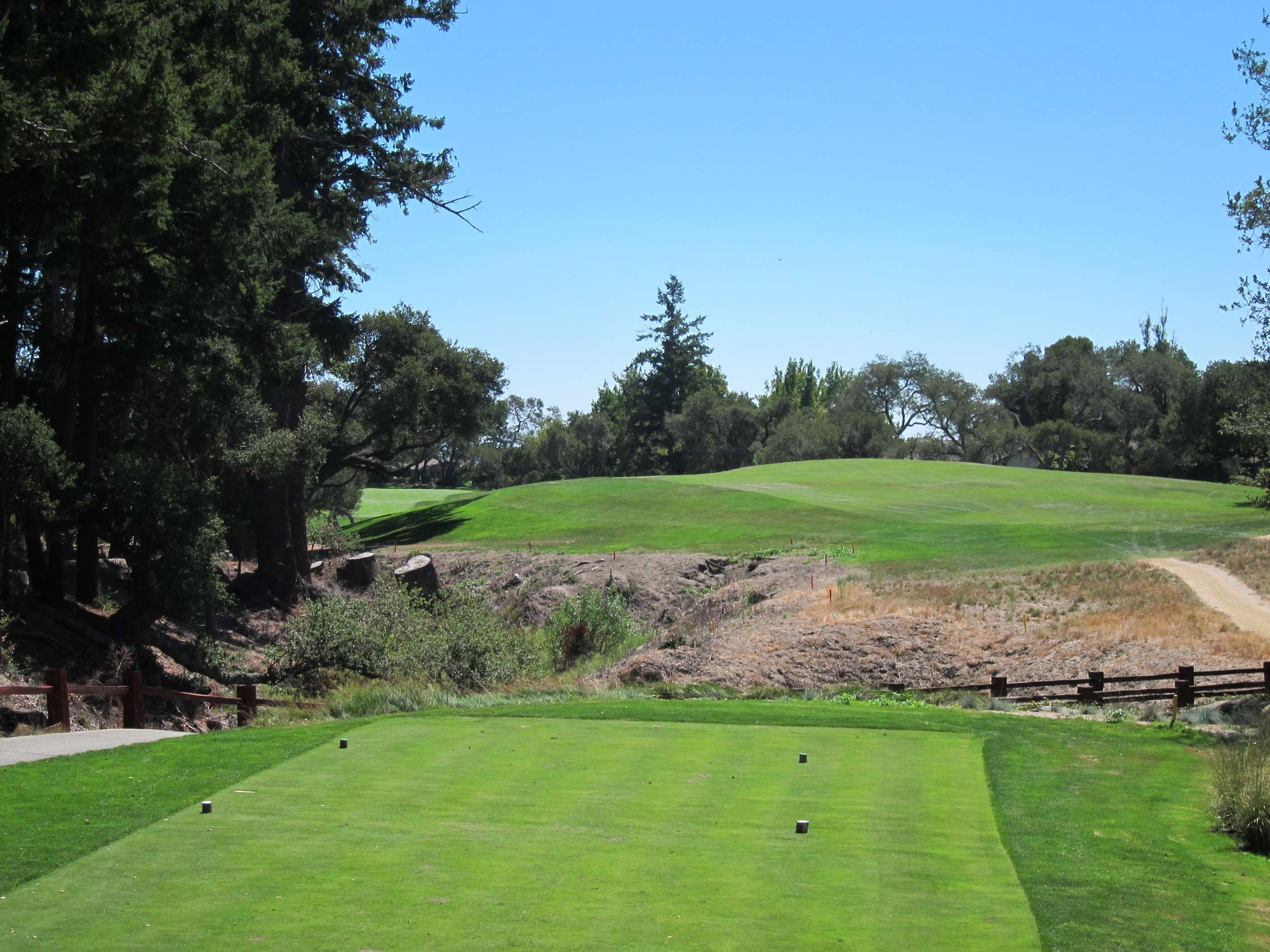
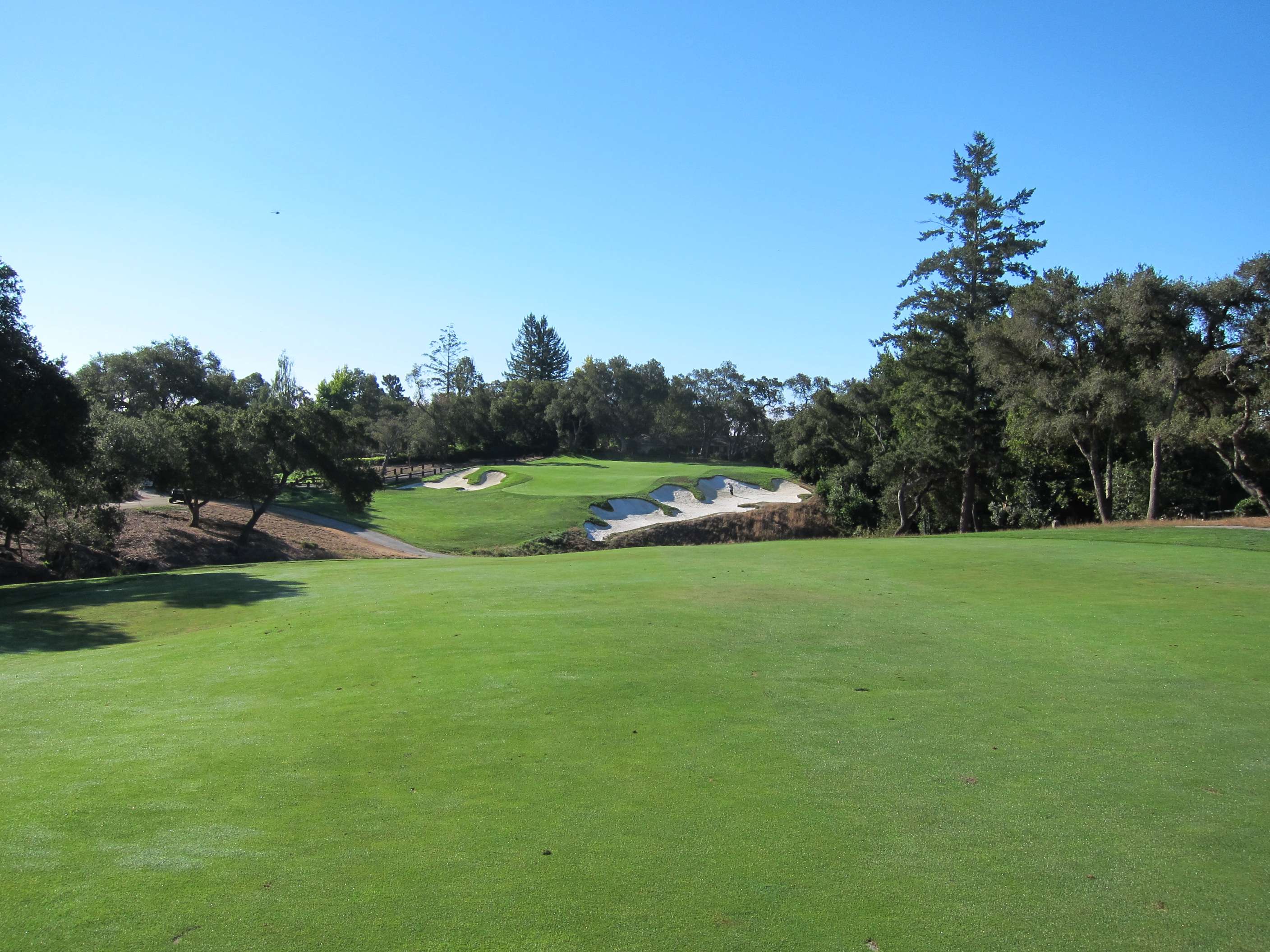
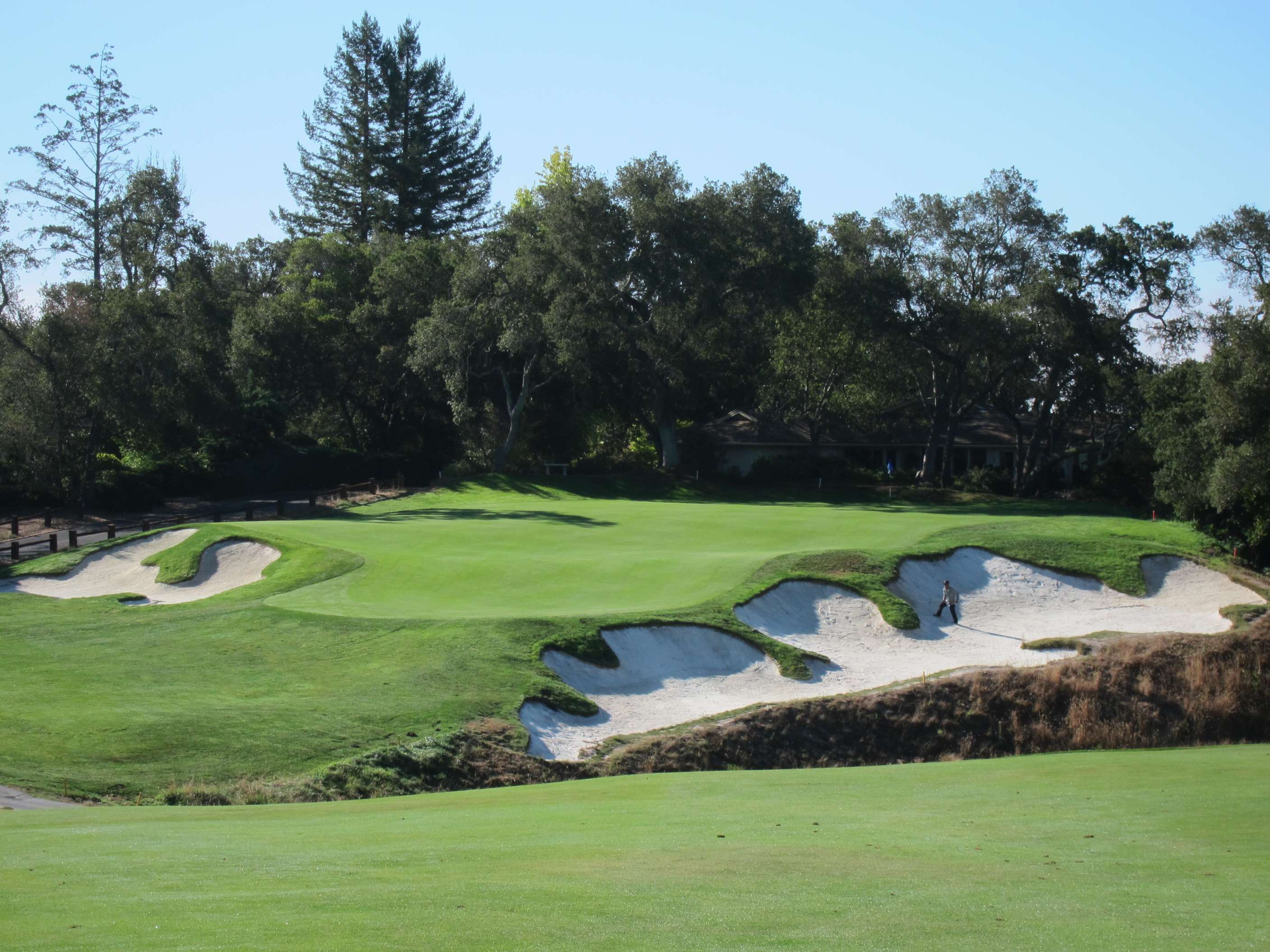
The 18th is a perfect way to end such an out-of-the-box golf course. Par three 18th holes are rare beasts - but I am sure there isn't another that rivals this one for interest and drama, the green sliding severely into the barranca and the bunkering accentuating what steep land this is.
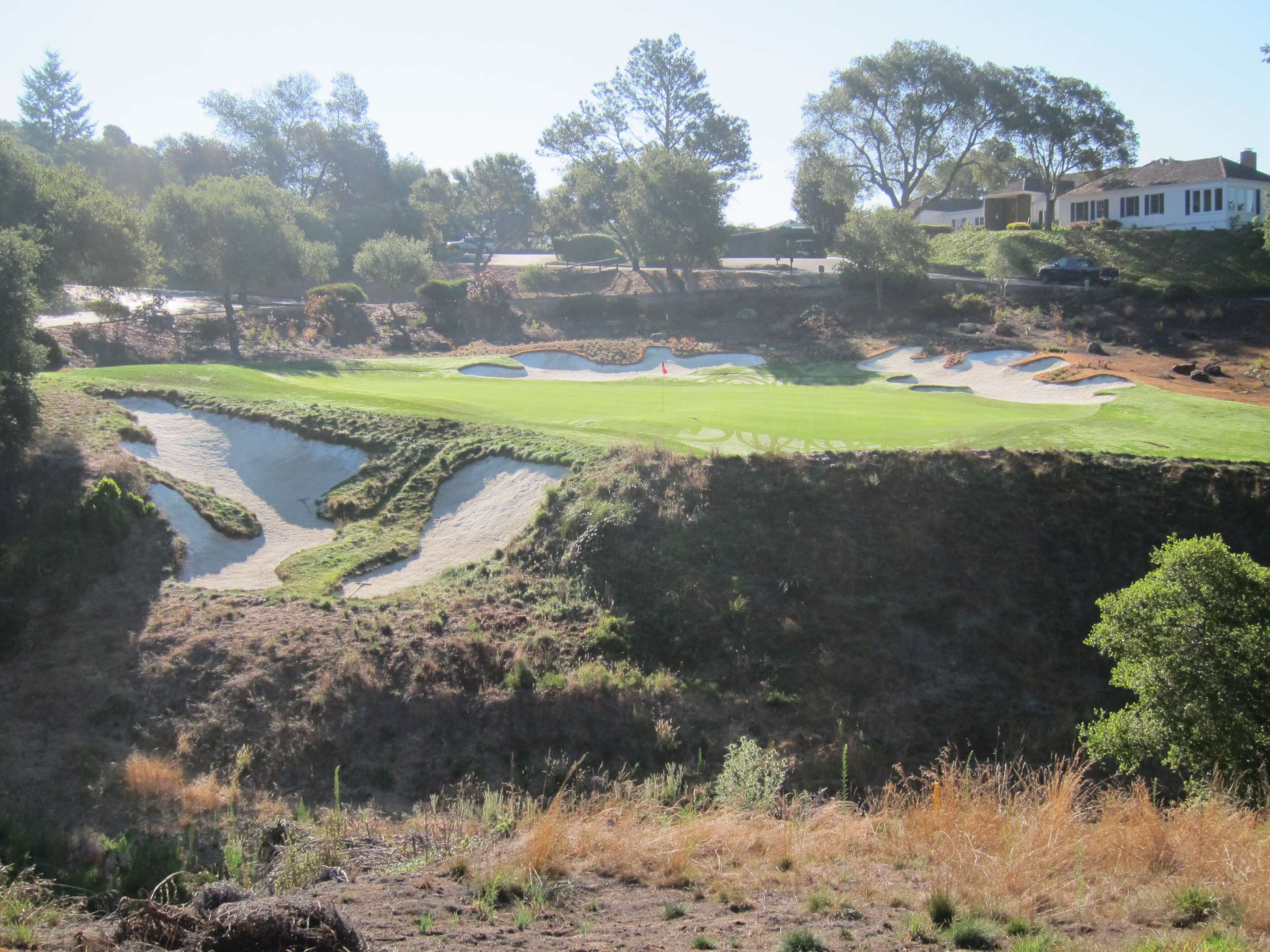
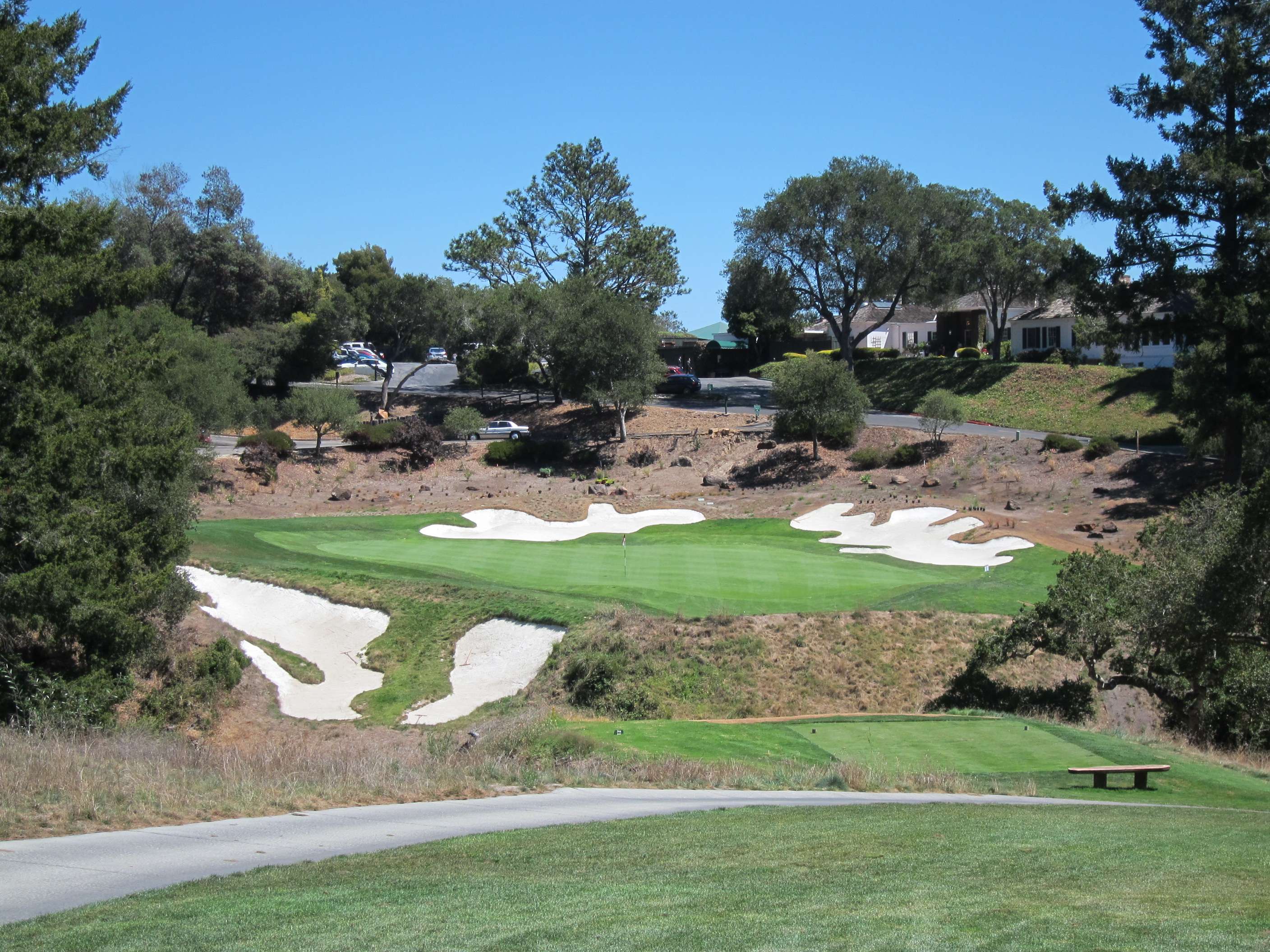
It was all over far too soon, despite spending the best part of seven hours on the course walking and then playing, but I wasn't too sad to drive out the car park and pass the 2nd and 4th one last time on the way out. Because it's not a case of if I will be back, just a question of how soon and how regularly.